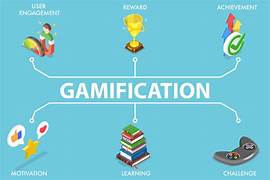Can Gamification Enhance Learning Outcomes?
In recent years, gamification has emerged as a popular method for enhancing learning across diverse environments, from classrooms to corporate training sessions. The integration of game-like elements—such as points, badges, leaderboards, and levels—into non-game contexts aims to boost engagement, motivation, and retention. But does gamification truly improve learning outcomes, or is it just a buzzword? This article delves into the concept of gamification, its applications, benefits, challenges, and how it can be harnessed effectively to transform education and training.
Understanding Gamification in Learning
Gamification refers to the application of game mechanics and principles in non-game settings. Unlike traditional games designed purely for entertainment, gamified systems focus on achieving specific objectives, such as learning a new skill or mastering a subject.
In educational contexts, gamification can take various forms:
- Reward Systems: Students earn points, badges, or other incentives for completing tasks or achieving milestones.
- Progression Mechanics: Learners advance through levels or unlock new content as they demonstrate mastery.
- Competition and Collaboration: Leaderboards and team-based challenges foster friendly competition and cooperative problem-solving.
- Immediate Feedback: Real-time feedback on performance encourages learners to reflect, adjust, and improve.
The appeal of gamification lies in its ability to tap into intrinsic and extrinsic motivators, creating an engaging and rewarding experience for learners.
How Gamification Enhances Learning
1. Increasing Motivation and Engagement
One of the most significant benefits of gamification is its ability to increase motivation. By incorporating elements like rewards and challenges, gamified learning appeals to the human desire for achievement and recognition.
For instance, a gamified language-learning app like Duolingo keeps users engaged with streaks, levels, and rewards. This system encourages consistent practice and transforms the learning process into an enjoyable activity.
2. Promoting Active Participation
Traditional learning methods often involve passive consumption of information, which can lead to disengagement. Gamification, on the other hand, emphasizes active participation. Learners are encouraged to solve problems, complete tasks, and make decisions, fostering a deeper understanding of the material.
3. Improving Retention and Recall
Research suggests that gamification can improve information retention by making learning more memorable. The use of visual aids, storytelling, and interactive elements creates a multisensory experience that enhances recall.
For example, medical students using gamified simulations to practice surgeries retain procedural knowledge more effectively than those relying solely on textbooks.
4. Encouraging Collaboration and Social Learning
Gamified systems often include collaborative challenges or team-based activities. These encourage peer interaction, communication, and teamwork, which are essential skills in both educational and professional settings.
Incorporating leaderboards or group rewards fosters a sense of community and shared achievement, motivating learners to support one another.
5. Providing Immediate Feedback
Immediate feedback is a cornerstone of effective learning, allowing individuals to understand their mistakes and make corrections promptly. Gamified platforms often provide instant performance insights, ensuring that learners stay on track and remain motivated to improve.
Applications of Gamification in Learning
1. Education
Gamification has gained traction in schools and universities as a tool to engage students. Teachers use platforms like Kahoot! and Classcraft to gamify lessons, turning quizzes and classroom management into interactive experiences.
For younger students, educational games like ABCmouse and Prodigy make foundational skills in math and reading accessible and fun.
2. Corporate Training
In the corporate world, gamification is used to enhance employee training programs. By incorporating challenges, badges, and role-playing scenarios, companies can make mandatory training modules, such as compliance or soft skills, more engaging.
Sales teams, for instance, may use gamified platforms to track performance and incentivize employees through leaderboards and rewards.
3. Professional Development
Online learning platforms like Coursera and Udemy incorporate gamified elements, such as certificates, progress tracking, and quizzes, to encourage users to complete courses and acquire new skills.
4. Healthcare and Rehabilitation
Gamification is also making strides in healthcare education and patient rehabilitation. Apps like MyFitnessPal and SuperBetter gamify health goals, promoting physical and mental well-being through rewards and challenges.
Challenges of Gamification in Learning
Despite its benefits, gamification is not without challenges.
1. Risk of Superficial Engagement
While gamification can boost motivation, there is a risk that learners may focus more on earning rewards than understanding the content. This superficial engagement undermines the ultimate goal of learning.
2. Overemphasis on Competition
Leaderboards and competitive elements can sometimes discourage learners who struggle to keep up. This is particularly problematic in diverse learning environments where students have varying abilities and backgrounds.
3. Design Complexity
Creating effective gamified systems requires careful planning and expertise. Poorly designed gamification can lead to confusion, frustration, and a lack of interest among learners.
4. Sustainability and Long-Term Impact
The novelty of gamification can wear off over time, reducing its effectiveness. Maintaining learner engagement requires continuous innovation and updates to the system.
5. Ethical Concerns
Gamification relies heavily on data collection to track progress and performance. This raises concerns about privacy, data security, and consent, especially when applied in educational settings.
Best Practices for Effective Gamification
To maximize the benefits of gamification while addressing its challenges, educators and developers should follow these best practices:
1. Align Gamification with Learning Objectives
The design of gamified systems should prioritize educational goals over entertainment. Rewards and challenges must reinforce the content being taught, ensuring that learners remain focused on skill development.
2. Balance Competition and Collaboration
While competition can be motivating, excessive emphasis on winning may alienate some learners. Incorporating collaborative elements ensures that all participants feel included and valued.
3. Provide Meaningful Rewards
Rewards should be relevant and meaningful to learners. Instead of focusing solely on points or badges, consider offering tangible benefits like skill certifications, career opportunities, or personal development.
4. Ensure Accessibility and Inclusivity
Gamified systems must be designed to accommodate diverse learning needs, including those of individuals with disabilities. Accessibility features, such as adjustable difficulty levels and alternative input methods, ensure that everyone can participate.
5. Continuously Evaluate and Improve
Feedback from learners is essential for refining gamified systems. Regular evaluation helps identify areas for improvement and ensures that the platform remains engaging and effective.
Case Studies of Gamification Success
1. Duolingo
Duolingo has revolutionized language learning by gamifying the process. With features like streaks, daily goals, and competitive leaderboards, the app has successfully motivated millions of users worldwide to learn new languages consistently.
2. Khan Academy
Khan Academy’s gamified approach to education includes progress tracking, badges, and personalized learning paths. These elements have made math and science accessible to students of all ages.
3. Cisco’s Gamified Training Program
Cisco integrated gamification into its employee training programs, using points, leaderboards, and challenges to teach employees about social media and digital marketing. The program increased participation and knowledge retention significantly.
Conclusion
Gamification has the potential to enhance learning outcomes by making education more engaging, interactive, and rewarding. Its applications span a wide range of contexts, from traditional classrooms to corporate training and beyond.
However, gamification is not a one-size-fits-all solution. Its effectiveness depends on thoughtful design, alignment with learning objectives, and a balance between fun and functionality. By addressing its challenges and leveraging its strengths, gamification can transform learning into an enjoyable and impactful journey for individuals across all stages of life.
As technology continues to evolve, so too will the possibilities for gamification, paving the way for a future where learning is not just a task but an adventure.


